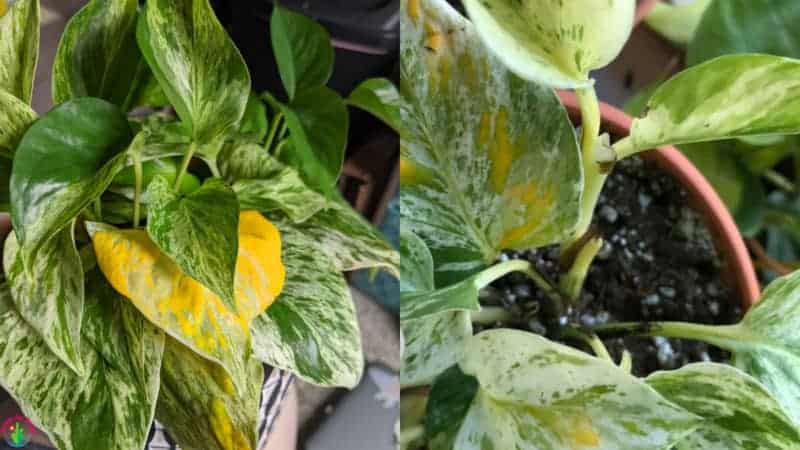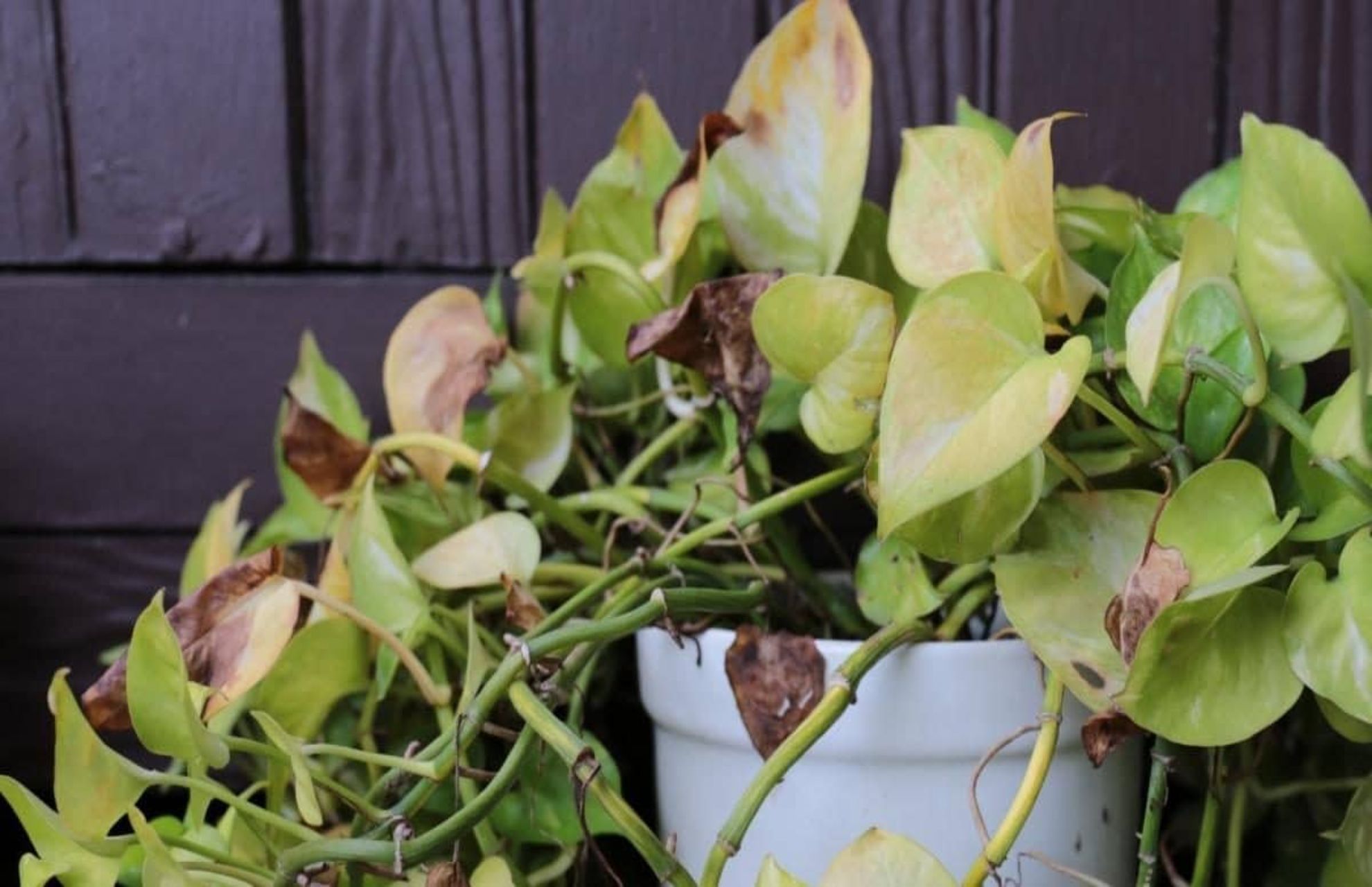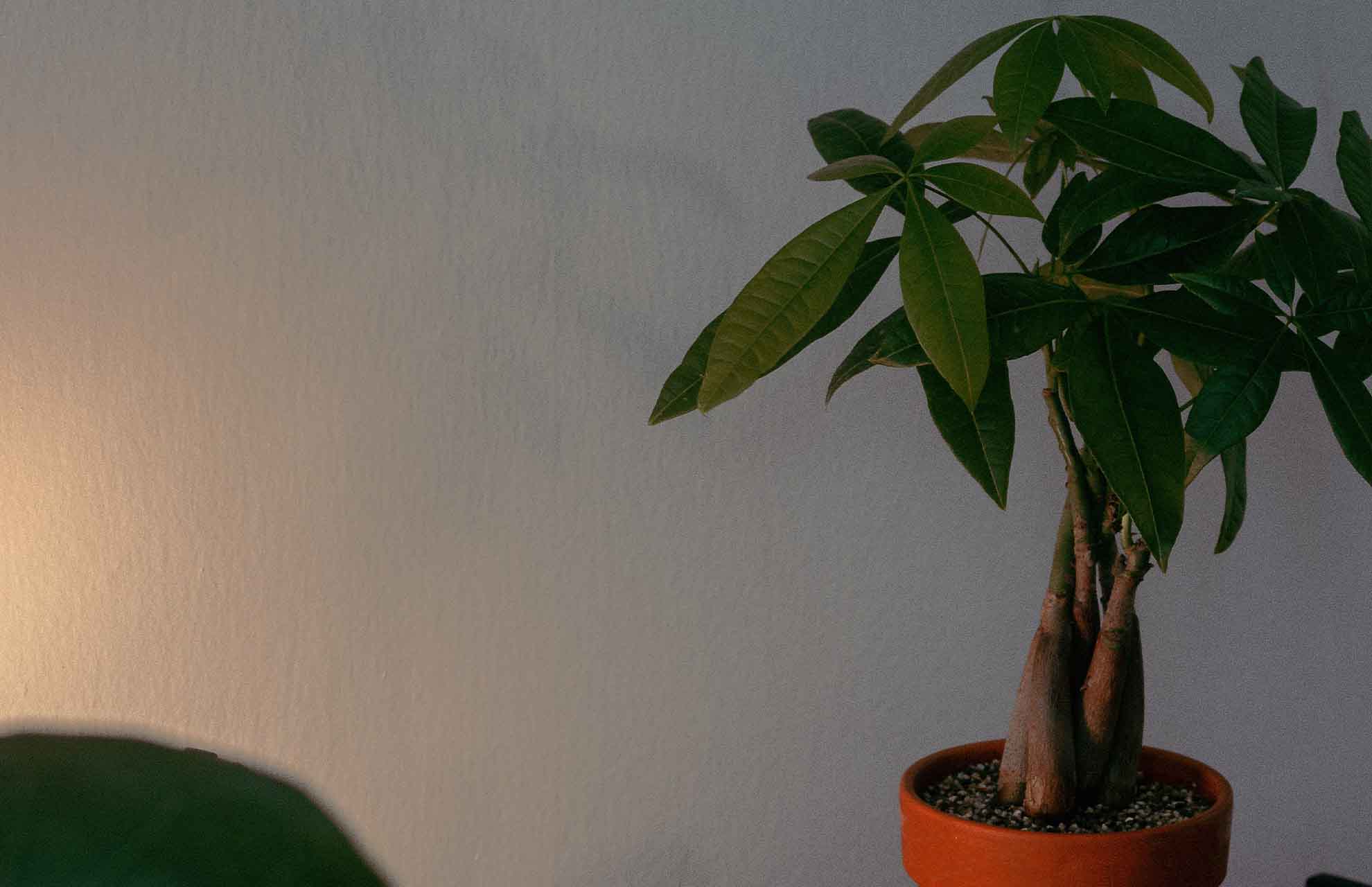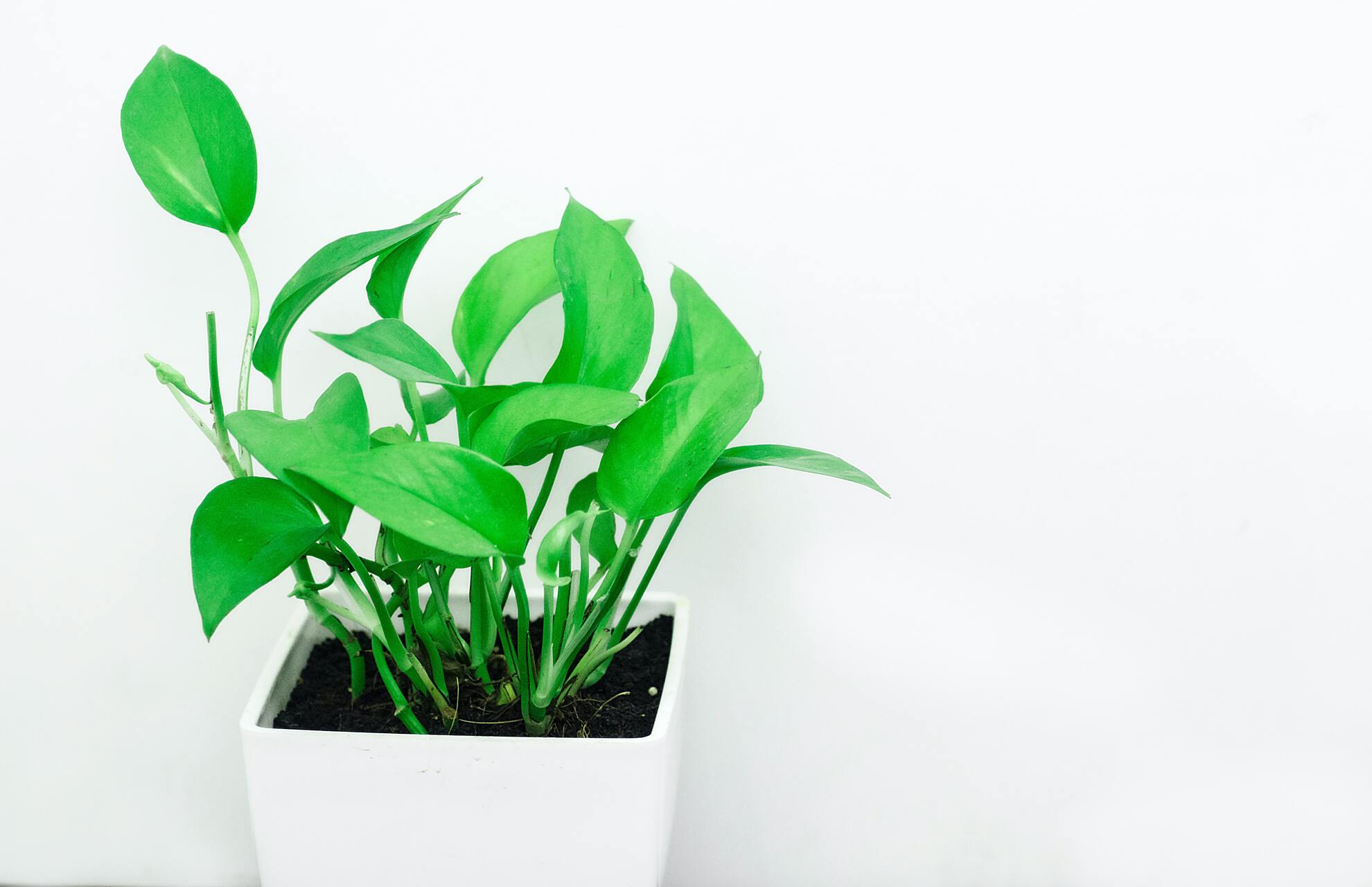Pothos are tolerant indoor plants that don’t require a lot of water or sunlight, making them a great choice for novice gardeners. The onset of yellowing leaves on a pothos is one of the first indicators that something is wrong.
Fortunately, even if your pothos plant has yellowing leaves, you can probably restore its health by figuring out the issue and effectively resolving it. This article will look at the 10 reasons why your pothos leaves turning yellow. Please keep reading.
Can Yellow Pothos Leaves Turn Green Again?
The majority of the time, a leaf that has turned yellow won’t return to being green or variegated. However, with our assistance, your pothos will flourish and soon begin to produce fresh, healthy growth.
Aging Leaves
Let’s first determine whether there is a problem before we get into troubleshooting for your pothos plant. The older leaves on the pothos occasionally turn yellow before dying off as the plant ages naturally.
If only one or two leaves are yellowing at a time and your pothos is still producing new foliage and appears otherwise healthy, it’s possible that you are simply witnessing a natural process that every plant goes through.
How To Fix:
There isn’t much you need to do if you think the yellowing leaves are simply nearing the end of their natural life. To increase the soil’s nutrient content, use a diluted houseplant fertilizer. Also, keep an eye on your pothos plant to make sure the yellowing isn’t an early sign of another issue.
Inconsistent Watering
An inconsistent watering schedule can shock a plant. Your plant enters a state of survival if you repeatedly overwater it but then leave it alone for a week afterward. Plants with the hos are consistent. For best health, they prefer to have their soil watered once to twice a week.
Follow a routine to make sure that your watering schedule is normalized. To determine whether the soil is too dry, you should also examine the texture of the plant’s soil.
Your plant’s leaves may start to droop if you can press down on it and it feels too dry. If you’ve waited too long, this is frequently the first indication.
How To Fix:
Don’t overwater when you start to water once more. Your pothos will start to normalize as you gradually introduce a more consistent watering schedule. Make sure you don’t overwater your plants when you first start to water them by checking the soil frequently. Begin by keeping to a weekly watering schedule; as your plant’s response dictates, you can gradually increase the intervals.
Overwatering
Yellow leaves with some brown spots will be present when there has been overwatering. When too much water oversaturates the soil of the plant, you might notice some pitting on the leaves. This causes your pothos to receive insufficient oxygen, which results in brown spots and yellowing.
In the worst-case scenarios, you can always re-pot your plant to fix overwatering. Given the right conditions, pothos is a tough plant that can be replanted.
A pothos plant that has been overwatered may develop root rot, which results in pith necrosis (brown spots). The leaves and stems of pothos plants rot, turning yellow or brown or black, and falling off as a result of pith necrosis and excessive watering.
How To Fix:
If drainage is a problem, you should think about getting a new pot or switching soils to solve overwatering. Slow-draining soils can retain moisture, preventing the plant from getting the nutrients it needs.
Additionally, you have the option of putting your plant in a spot that receives a little more sunlight. The pothos dislikes direct sunlight, so keep that in mind. The best light is indirect sunlight.
However, if you want the soil on your plant to dry out, leave it out longer. In the event that this is unsuccessful, you should try a different potting or soil technique.
Underwatering
A surefire way to guarantee your plant’s leaves are yellow and crispy is to consistently underwater it. When pothos are not given enough water, their leaves will begin to droop and eventually die.
Simply examining how dry the soil of your plant is will quickly reveal this. Here things get complicated because a typical pothos watering schedule calls for the soil to completely dry out between waterings.
Just keep it from drying out too much after the point where it starts to. Never rewater pothos soil after it has become completely dry! One of the main causes of plants failing to thrive indoors is overwatering.
Because they are picky about when they should be watered, plants like the pothos and the Frizzle Sizzle can die without water.
How To Fix:
Slowly increase the number of smaller watering intervals to saturate your plant to correct underwatering. However, keep in mind that pothos thrives best when the water completely dries the soil.
You want to use a healthy amount of water, and you want the soil to be nearly dry before you start watering again. You want to stay away from soil that is brittle to the touch, dry, and crispy.
Overfertilized

In the case of the pothos, “burns” from excessive fertilization can take the form of a yellowing or a brown color, depending on how severe the burn is. Although most plants’ leaves and stems can be affected, the most severe damage to the plant usually occurs at the root level.
Overfertilization is typically fairly simple to spot. You’ll see more fertilizer soot on the soil’s surface in your pot or planter.
Furthermore, the roots of your plant may start to turn black. There’s a good chance you need to cut back on your fertilization schedule if you notice these two symptoms in addition to yellow leaves or some browning at your leaf tips.
How To Fix:
You’ll need to make a few adjustments to restore your plant’s natural balance in order to correct overfertilizing. To begin with, you should remove any extra fertilizer from the soil area. You ought to think about repotting your plant if there is simply too much.
Trim away any burned leaf edges or leaves that appear to be beyond saving due to wilting. Then, to almost completely flush the soil of excess fertilizer, you’ll want to water too much. Wait at least a few weeks before fertilizing, then observe your plant’s recovery.
Read More: What Is The Best Soil For Pothos? How To Choose?
Root Bound
Your pothos may also have outgrown their current container and become root-bound, which can also cause the leaves to turn yellow. If the growth of your pothos is slowed or stunted, the roots are visible through the drainage holes, or the plant appears to be running out of room, the plant may require repotting.
How To Fix:
To examine the root ball, gently tip the pothos out of its container while holding the bottom of the plant in place with your hand. It’s time to repot if the roots appear dense and wrapped around the pot’s shape.
Root Rot
Pathogens such as pythium or fusarium, which prefer moist soil, are the main culprits behind root rot. Examine the roots if the stems and a lot of the leaves on the pothos turn yellow.
Look at the root ball after removing the pothos from its container and supporting the plant’s base. Root rot has set in if the roots are mushy, soft, and black.
How To Fix:
The pothos can probably still be saved if any of the roots still look firm and pale:
- Rinse the roots gently in lukewarm water to get rid of as much soil as you can.
- All of the rotten roots should be cut off with a good pair of shears, and the old potting soil should be thrown away. Rotten roots feel mushy and soft, whereas healthy roots will still feel nice and firm.
- To get rid of any leftover pathogens, wash the pot with a diluted bleach solution.
- Repot the pothos in new, well-draining potting soil; you might need a smaller pot if you’ve severed a sizable portion of the roots. Prior to replanting, you might want to fungicide-dip the roots.
- Pruning back any damaged leaves and additional leaves proportionate to how many roots you removed requires cleaning the pruning shears with rubbing alcohol. The healthy roots that are still present will not be overworked by having to support so many extra leaves in this manner.
Other fungi can affect pothos, but they are all much less likely to be the cause of the problem than root rot.

Too Much Sunlight
Sunlight is good for pothos plants. However, they don’t do well in direct sunlight. They might wilt, become limp, and turn yellow if they spend too much time in the sun.
If you leave your plant outside all day, think about bringing it inside so that it can spend some time in the shade and less time in the sun.
You could also place your pothos in an area that receives sunlight only at specific times of the day. Once it has been relocated, just watch that it doesn’t get too little sunlight. Remember that if your plant receives too much sun, it might also stop producing the leaves you’ve seen in pictures.
How To Fix:
*Trim any dead or noticeably yellowed areas first if your plant has received excessive direct sunlight. Then you should relocate the plant to a more tolerant spot for shade. You could do this by moving the plant each day so that it receives indirect morning sunlight and afternoon shade.
Alternatively, you could simply plant it indoors, away from direct sunlight, to avoid damaging it. Make sure your climate will support it before planting it outdoors in partial sun.
Aerial Blight
The leaves of a pothos plant will yellow slightly as a result of aerial blight, but there will also typically be darker spots on the leaves. Blight-affected plants can still be attempted to be treated, but they are frequently more difficult to recover from and may need to be abandoned.
You can try to treat them by pruning off the plant’s afflicted areas and repotting them in a fresh container with new soil. However, once a plant has blight, it typically won’t recover quickly.
How To Fix:
Most pothos plants typically die when they develop aerial blight. After removing the dead foliage from your plant, you might try repotting it and applying a bacterial fungicide to the roots. Replanting should only be done in brand-new or thoroughly sanitized containers. Even so, it’s possible that the plant won’t be able to be recovered.
Pests
Despite being fairly hardy, pothos plants are still susceptible to pest infestations. Mealybugs can be removed with a cotton swab dipped in rubbing alcohol. They appear as white, fuzzy spots in the crevices of the plant.
How To Fix:
Spider mites have a small spider-like appearance, and while they can be hard to find, their white webbing is readily apparent. Separate the pothos from other plants and spritz them with water to get rid of the mites. Use neem oil or insecticidal soap to treat.
Read More:









